No kidding I've just read they can literally explode in short order. As soon as this one is done, Ill start building a couple larger ones!
- Formiculture.com
- Forums
- Gallery
- Members
- Member Map
- Chat

No kidding I've just read they can literally explode in short order. As soon as this one is done, Ill start building a couple larger ones!
Yes- they can explode. Here are mine- developed from a single queen caught in May.
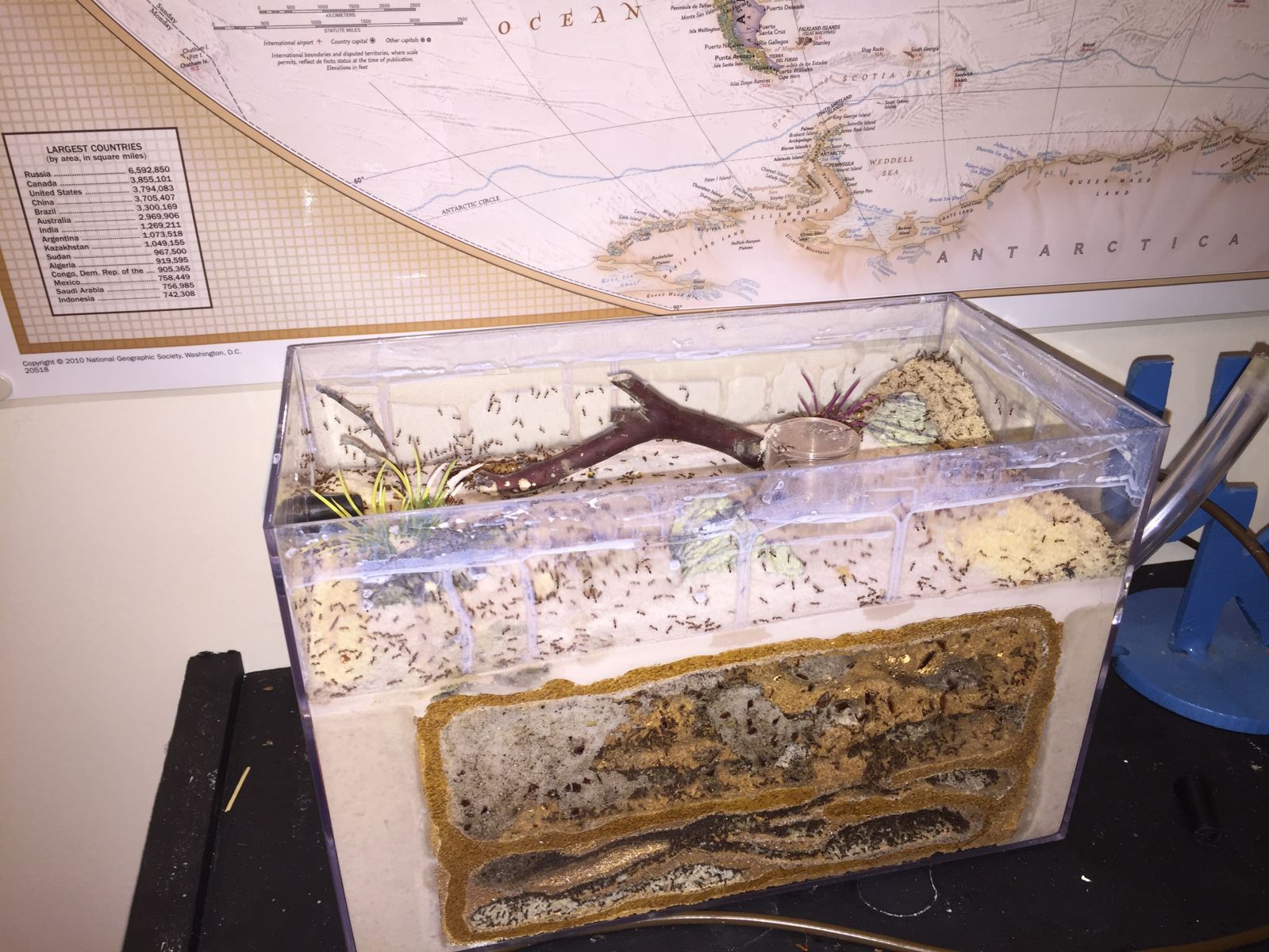
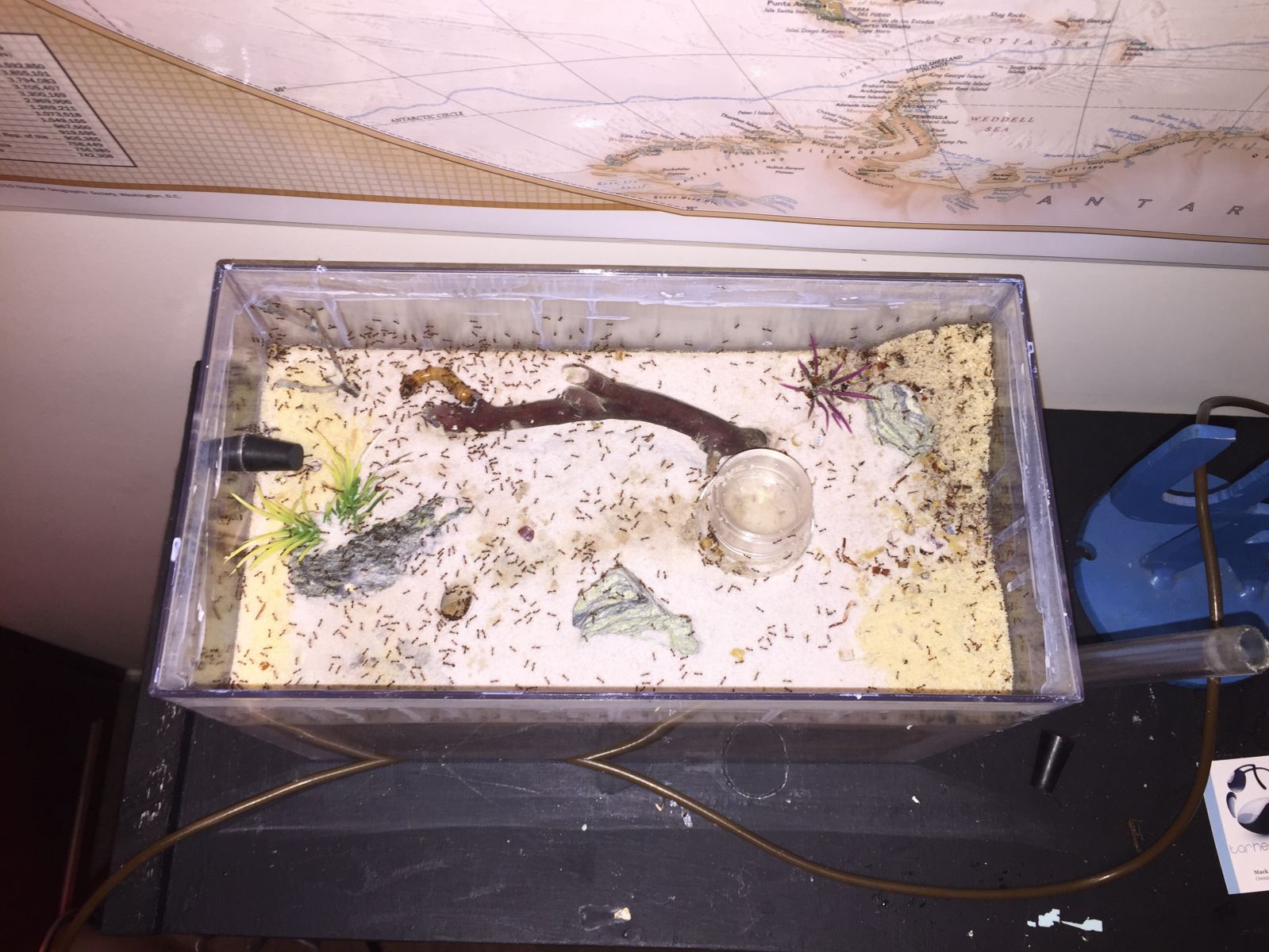
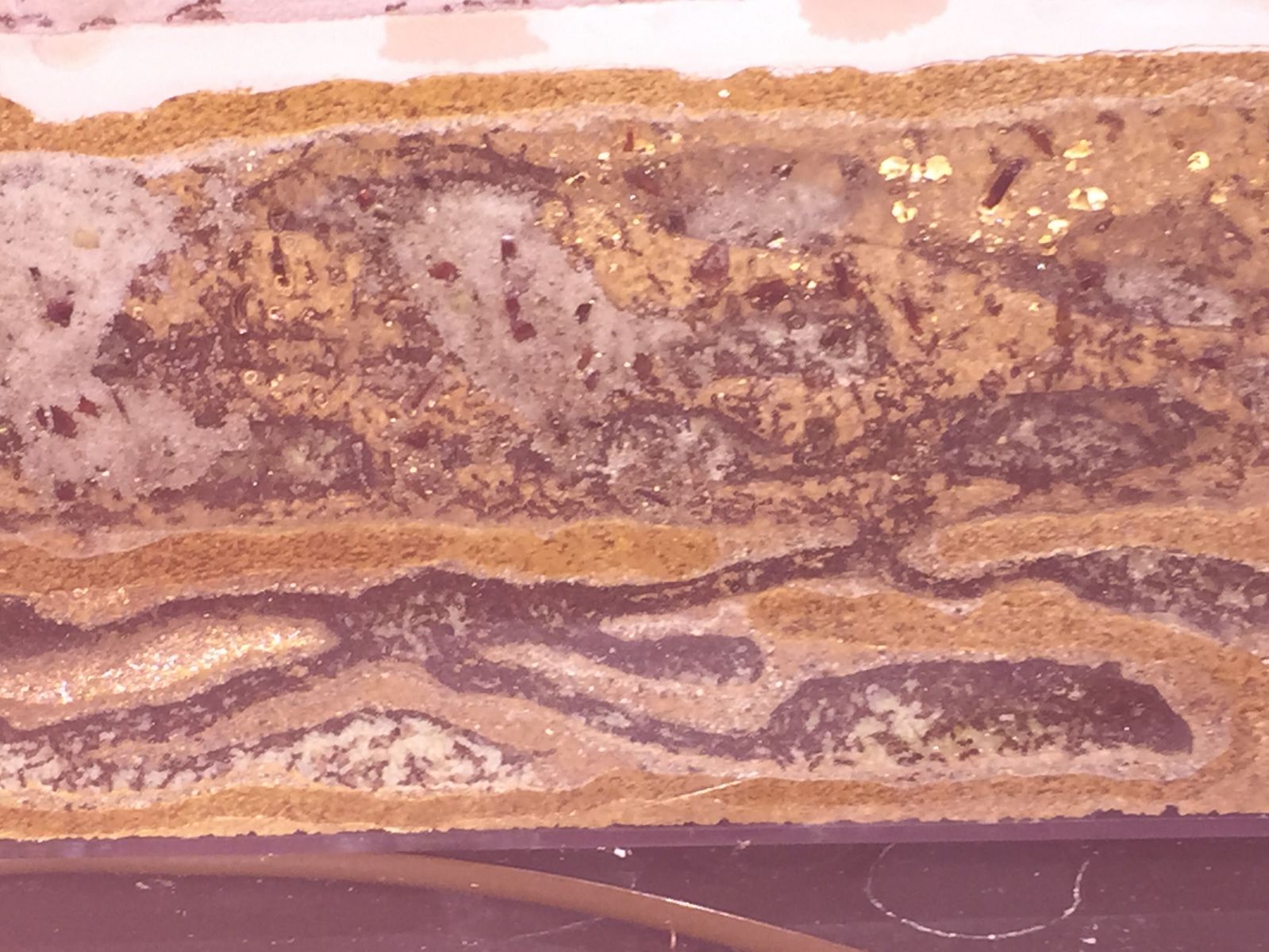
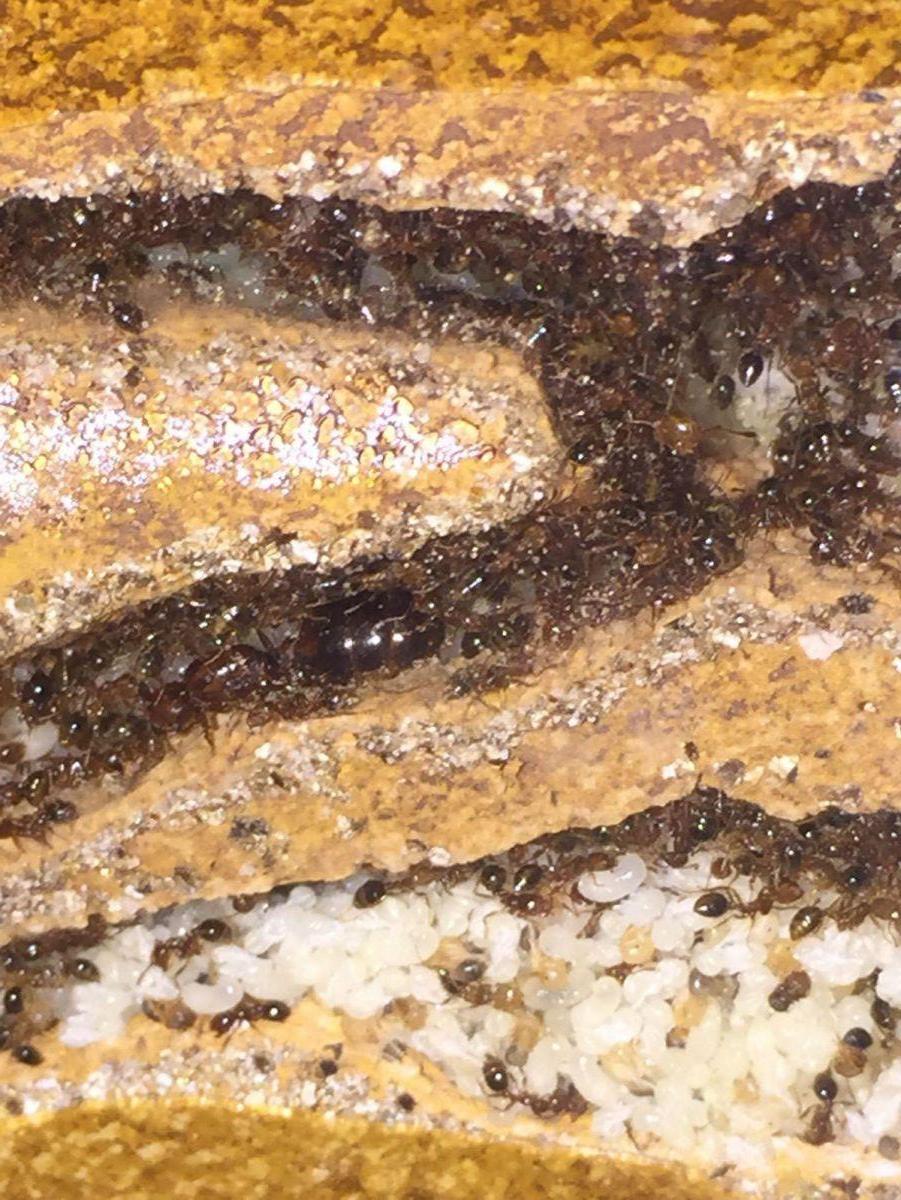
Current Colonies:
Aphaenogaster tennesseensis (50 Workers)
Formica subsericea (5+ Workers)
Tetramorium caespitum (50+ Workers)
Parastic Lasius (15 Accepted Host Workers)
Crematogaster cerasi (10 + Workers)
Temnothorax sp. (70 + workers)
Thanks for the pictures. Did you build the nest or did the ants do it?
Tar Heel Ants product
Current Colonies:
Aphaenogaster tennesseensis (50 Workers)
Formica subsericea (5+ Workers)
Tetramorium caespitum (50+ Workers)
Parastic Lasius (15 Accepted Host Workers)
Crematogaster cerasi (10 + Workers)
Temnothorax sp. (70 + workers)
WE HAVE TINY ANTS!
Do you have any pictures?
Currently Keeping:
Trachymyrmex septentrionalis
Pheidole pilifera
Forelius sp. (Monogynous, bicolored) "Midwestern Forelius"
Crematogaster cerasi
Pheidole bicarinata
Aphaenogaster rudis
Camponotus chromaiodes
Formica sp. (microgena species)
Nylanderia cf. arenivega
Best crappy cell phone pic I could get at the moment.
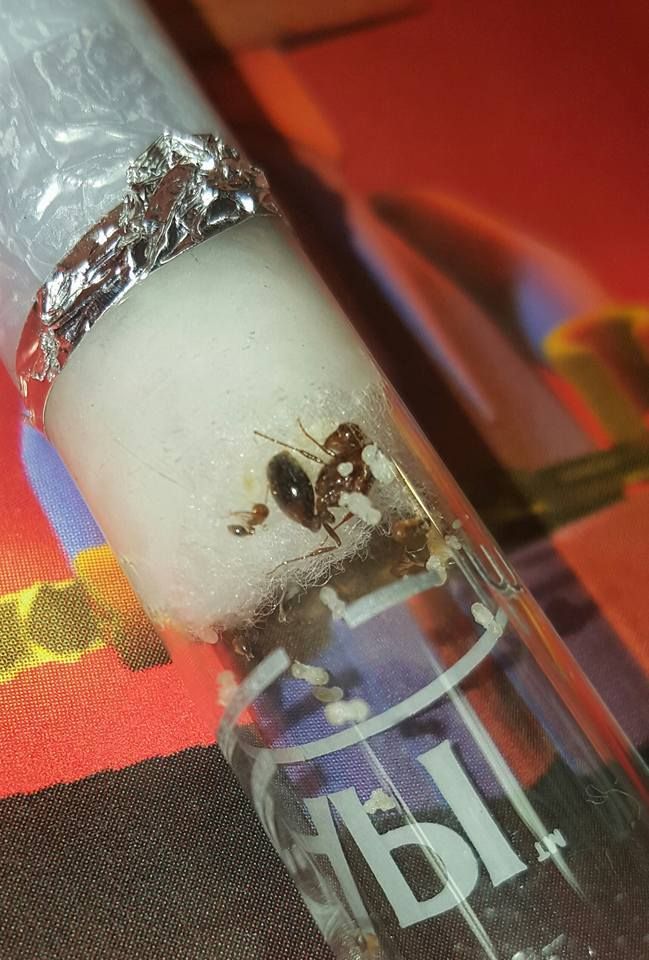
Well done on the first nanitic worker!
Thank you, thank you. It appears as though we will have 10-20 of these by the end of next week. I really need to build the formicarium soon! lol
Congradulations!
After the first workers are born they skyrocket in growth. In less than 6 months you will have about 10,000 ants. Make sure you build a large enough formicarium and give them adequate food.
Currently Keeping:
Trachymyrmex septentrionalis
Pheidole pilifera
Forelius sp. (Monogynous, bicolored) "Midwestern Forelius"
Crematogaster cerasi
Pheidole bicarinata
Aphaenogaster rudis
Camponotus chromaiodes
Formica sp. (microgena species)
Nylanderia cf. arenivega
What would be an example of a large enough formicarium, and adequate food. Its a hard thing to research online. Thanks.
What would be an example of a large enough formicarium, and adequate food. Its a hard thing to research online. Thanks.
Just make sure they are never looking for a nest. I would almost recommend leaving a nest they could move into if they need extra space. What I meant by adequate food is that they always have uneaten protein(insects),Carbohydrates(Like Honey) and water in their outworld. These colonies can get to be 200,000+ workers so you might have to limit their food if they get too big.
Currently Keeping:
Trachymyrmex septentrionalis
Pheidole pilifera
Forelius sp. (Monogynous, bicolored) "Midwestern Forelius"
Crematogaster cerasi
Pheidole bicarinata
Aphaenogaster rudis
Camponotus chromaiodes
Formica sp. (microgena species)
Nylanderia cf. arenivega
OK, I think what I will do then is make more than one formicarium and be able to connect them together so the ants can expand into the new one if they want. As of today we have half a dozen or more (nanitic?) workers! Pics this evening.
Currently Keeping:
Trachymyrmex septentrionalis
Pheidole pilifera
Forelius sp. (Monogynous, bicolored) "Midwestern Forelius"
Crematogaster cerasi
Pheidole bicarinata
Aphaenogaster rudis
Camponotus chromaiodes
Formica sp. (microgena species)
Nylanderia cf. arenivega
Here is a picture, best I could get with my camera (user inexperience with macro photography).
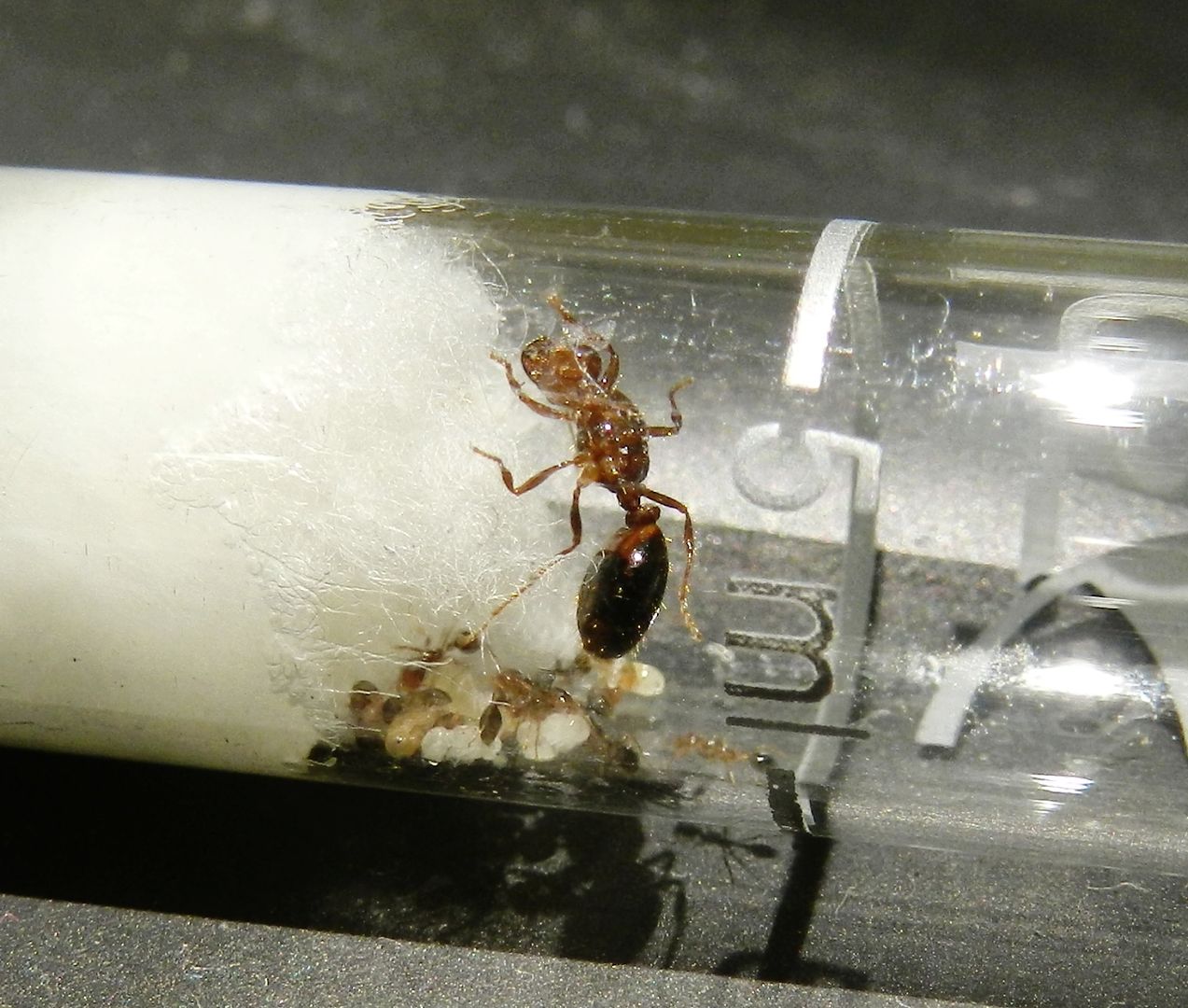
And here is a video that does much more justice to our little colony. Woot! Ant babies!
Currently Keeping:
Trachymyrmex septentrionalis
Pheidole pilifera
Forelius sp. (Monogynous, bicolored) "Midwestern Forelius"
Crematogaster cerasi
Pheidole bicarinata
Aphaenogaster rudis
Camponotus chromaiodes
Formica sp. (microgena species)
Nylanderia cf. arenivega
Gave them a tiny drop of honey and they went right to it. Woot!
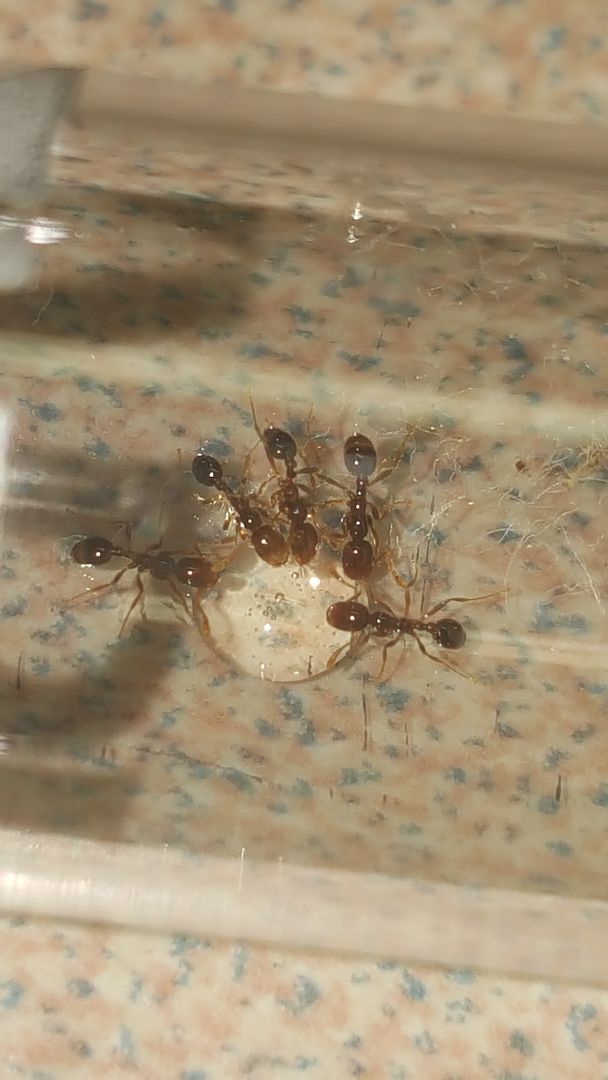
That's good you should try a protein next.
Currently Keeping:
Trachymyrmex septentrionalis
Pheidole pilifera
Forelius sp. (Monogynous, bicolored) "Midwestern Forelius"
Crematogaster cerasi
Pheidole bicarinata
Aphaenogaster rudis
Camponotus chromaiodes
Formica sp. (microgena species)
Nylanderia cf. arenivega
0 members, 0 guests, 0 anonymous users